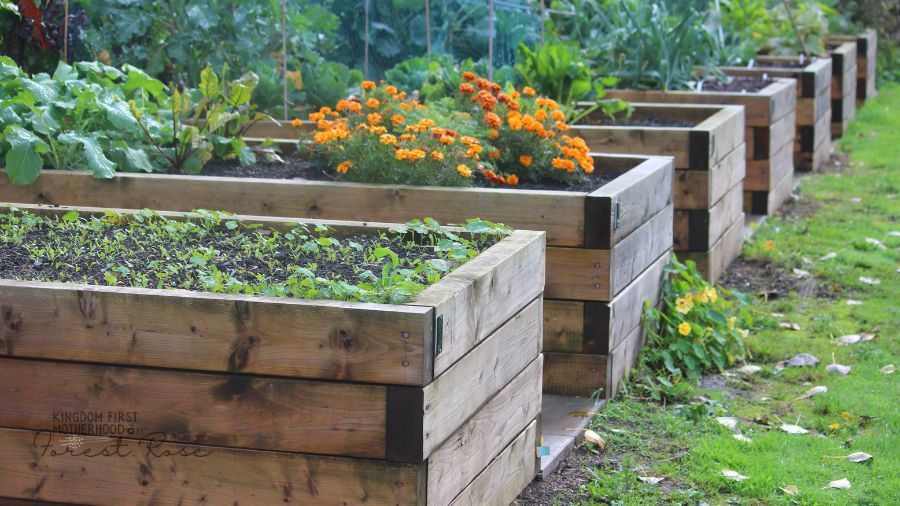A sustainable home needs a sustainable backyard, a thoughtfully designed oasis seamlessly blending environmental responsibility with everyday practicality. Imagine a space where you can relax in nature, engage in recreational activities, cultivate your garden, and create habitats that support local wildlife. This holistic approach enhances the beauty of your outdoor area and maximizes its utility and ecological value.

To achieve a harmonious and functional outdoor space, consider consulting with professional landscape designers like Michaelangelo’s, who specialize in creating sustainable and multi-functional backyard environments.
Ready to create a backyard sanctuary that’s kind to the planet? This article explores how to design adaptable spaces for all your needs while minimizing your environmental footprint.
Contents
Planning Your Sustainable Backyard
Thorough planning is the cornerstone of creating a sustainable and functional backyard. Follow these steps to ensure a well-thought-out design:
Step 1 – Assess Your Space
- Evaluate the size, shape, and existing features (trees, slopes, structures)
- Note sunlight patterns and water drainage
Step 2 – Identify Your Needs
- Gardening: Space for growing vegetables, herbs, and flowers
- Entertainment: Areas for dining, socializing, and relaxing
- Children’s Play: Safe and engaging play zones
- Wildlife Habitats: Spaces to attract birds, bees, and other beneficial wildlife
Step 3 – Incorporate Sustainability Principles
- Choose native and drought-tolerant plants
- Use recycled or sustainably sourced materials for structures and pathways
- Consider permeable paving to reduce runoff
Step 4 – Plan for Multi-Functionality
- Patio Areas: Double as dining spaces and gardening workstations
- Lawn Spaces: Serve as play areas and venues for outdoor events
- Vertical Gardens: Provide privacy and space for growing plants
Step 5 – Ensure Flow and Accessibility
- Design wide pathways for easy movement
- Make key areas easily accessible
- Integrate seating and relaxation spots throughout the garden
| Bird Baths: Adding a bird bath to your garden can attract different bird species, creating a vibrant and lively environment. |
Sustainable Landscaping

Landscaping is a foundational element of a sustainable backyard, providing both aesthetic appeal and environmental benefits.
By thoughtfully selecting and arranging plants and features, you can create a space that thrives with minimal intervention while contributing positively to the local ecosystem.
Choose Native and Drought-Tolerant Plants
One of the most effective ways to ensure your backyard is sustainable is by incorporating native and drought-tolerant plants.
These plants are naturally adapted to your region’s climate and soil conditions, meaning they require less water and are more resistant to local pests and diseases.
Consider creating zones within your yard that highlight different types of native plants, providing a variety of textures, colors, and seasonal interest.
Native plants support local biodiversity by providing food and habitat for native wildlife, including birds, bees, and butterflies.
Adopt Organic Gardening Practices
Organic gardening practices, such as composting and using organic mulches, enhance soil structure, increase nutrient availability, and support beneficial microorganisms.
Avoiding chemical fertilizers and pesticides protects the environment and ensures the garden produces healthier, safer fruits and vegetables.
For example, enriching your soil with compost can improve its water retention and reduce the need for frequent watering, while organic mulches can suppress weeds and maintain soil moisture.
Implement Water-Wise Irrigation Systems
Drip irrigation systems are an excellent choice, delivering water directly to plant roots and minimizing waste from evaporation and runoff.
Installing rainwater harvesting systems and utilizing soaker hoses and smart irrigation controllers can optimize water usage by ensuring plants receive the right amount of water at the right times.
Additionally, consider greywater recycling to reuse household water for irrigation, conserving this precious resource.
Natural Pest Control Strategies
Effective pest infestation management is vital for maintaining a healthy home and garden. While natural methods play a significant role, a balanced approach is key.
Introducing beneficial insects like ladybugs and predatory wasps, alongside homemade sprays made from non-toxic ingredients such as garlic, neem oil, and soap, can reduce pest populations.
However, for persistent issues, professional intervention ensures comprehensive management and protection against pests.
Edible Gardens

This table highlights various types of edible gardens, their key features, ideal plants, and main benefits, helping you choose the best option for your space and needs.
Transform your backyard into a productive and sustainable oasis with these garden ideas.
| Garden Type | Key Features | Ideal Plants | Main Benefits |
| Raised Bed Gardens | For small spaces and urban settings | Lettuce, carrots, radishes | Easy soil control, good drainage, accessible |
| Container Gardens | Perfect for patios, balconies, and small yards | Herbs, tomatoes, peppers | Flexible, movable, easy soil management |
| Vertical Gardens | Maximizes space by growing upwards | Beans, peas, cucumbers | Space-efficient, aesthetic appeal |
| Herb Gardens | Can be grown in pots, window boxes, or garden beds | Basil, rosemary, thyme, mint, parsley | Enhances culinary dishes, medicinal benefits |
| Polyculture Gardens | Mixes various plants to mimic natural ecosystems | Vegetables, herbs, flowers, fruit plants | Promotes biodiversity, pest resistance |
| Kitchen Gardens (Potagers) | Combines aesthetics and productivity, often near the kitchen | Vegetables, herbs, edible flowers | Decorative, easy access to fresh ingredients |
| Greenhouse Gardens | Extends growing season, protects from weather | Wide range of vegetables, herbs, fruits | Climate control, year-round gardening |
Wildlife Habitats
Creating habitats for wildlife enhances biodiversity and helps support local ecosystems. Plant a variety of flowers to attract pollinators like bees and butterflies. Attract a symphony of beneficial creatures to your yard by building birdhouses, bat boxes, and insect hotels.
Using chicken wire can protect these habitats from predators and provide structure for climbing plants, adding another layer of functionality and beauty to your garden.
| Expert Tip: Create small wildlife corridors connecting different parts of your garden to allow animals to move safely and freely, enhancing biodiversity. |
Composting and Soil Health

Healthy soil is the foundation of a productive and thriving garden. One of the most effective ways to enhance soil health is through composting, a natural process that recycles organic waste into nutrient-rich humus.
This process transforms organic materials into compost, a rich, dark substance that acts as a natural fertilizer and soil conditioner.
Benefits of Compost for Soil Health
Incorporating compost into your soil offers numerous benefits:
- Nutrient Enrichment: Compost, packed with essential nutrients like nitrogen, phosphorus, and potassium, is released slowly to plants, reducing the need for chemical fertilizers.
- Improved Soil Structure: Compost improves soil texture, making it crumblier and easier to work with. It improves drainage in clay soils and water retention in sandy soils.
- Enhanced Microbial Activity: The addition of compost boosts the population of beneficial microorganisms, which help break down organic matter and release nutrients to plants.
- pH Balance: Compost can help neutralize soil pH, creating a more hospitable environment for many plants.
Energy Efficiency in the Backyard
Incorporate renewable energy sources and energy-efficient tools into your backyard design. Create outdoor living spaces powered by renewable energy, like solar-powered patio lights or a wind turbine for garden equipment.
Using energy-efficient tools and equipment helps reduce your carbon footprint. Designing flexible outdoor spaces maximizes the usability of your backyard.
Maintenance and Care
Regular maintenance is essential to keep your sustainable backyard thriving. Follow seasonal maintenance tips to ensure your garden remains healthy and productive throughout the year.
- Spring: Focus on planting and mulching to prepare for the growing season. Ensure new plants are well-watered and establish a solid foundation for growth.
- Summer: Maintain diligent watering schedules and monitor for pests and diseases. Use mulches to retain soil moisture and regulate soil temperature.
- Fall: Harvest crops, compost garden waste, and prepare plants for winter. Clean up debris to reduce overwintering sites for pests and diseases.
- Winter: Plan improvements for your garden design and protect sensitive plants with covers or by bringing them indoors. Use this time for maintenance tasks like tool sharpening and infrastructure repairs.
Conclusion
Creating a sustainable backyard with multi-functional spaces is a rewarding endeavor that benefits both you and the environment. By following the steps outlined in this article, you can transform your backyard into a beautiful, productive, and eco-friendly space.
Start small, make gradual changes, and enjoy the journey towards a more sustainable lifestyle.
For more homeschooling inspiration, tips and encouragement, make sure to follow KFH on Facebook, Pinterest, Instagram and Twitter, and subscribe to our Newsletter for some FREE GOODIES!
Forest Rose is a God Loving, Blessed Wife, & Mama to 3 girls. She’s passionate about lifting moms out of the trenches that are discouraged, overwhelmed, or feeling alone or isolated. Her hope is to point them to Christ and equip them to rise up with a newfound hope and joy within, that He alone can provide. Besides blogging, she also loves to create printables!




Leave a Reply